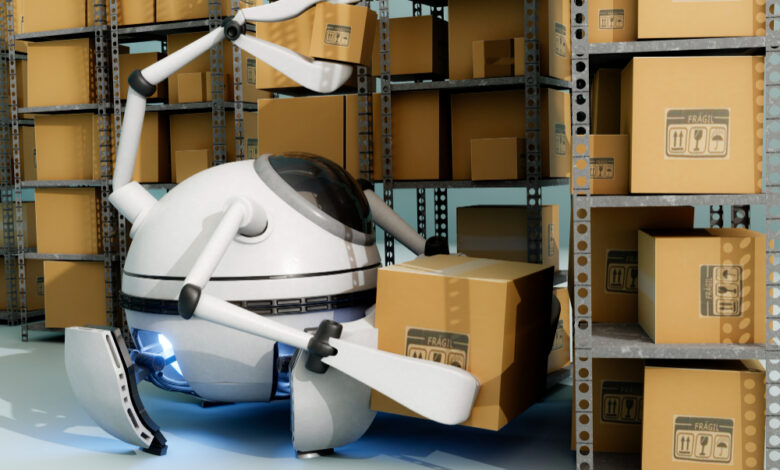AI-Powered Revolution: Amazon’s Innovations in Delivery Speed and Efficiency

Amazon is harnessing artificial intelligence (AI) to revolutionize delivery speed and efficiency. By using AI for transportation optimization, personalized product searches, and inventory placement, Amazon aims to minimize distance and increase delivery speed. The company’s regionalization strategy, supported by AI-driven data analysis, enables same-day or next-day deliveries. Additionally, robotic automation in fulfillment centers handles repetitive tasks, allowing human employees to focus on high-judgment responsibilities. Amazon views automation as collaborative robotics, transforming job roles rather than eliminating them, creating a synergy between humans and technology.
In a bid to enhance the speed and efficiency of its delivery services, Amazon has placed significant emphasis on harnessing the power of artificial intelligence (AI). Stefano Perego, the Vice President of Customer Fulfillment and Global Ops Services for North America and Europe at Amazon, recently outlined the company’s strategic employment of AI in various aspects of logistics. This article explores Amazon’s AI-driven approach to transportation optimization, personalized product searches, inventory placement, regionalization efforts, and the integration of robotics in its fulfillment centers. Furthermore, it discusses the potential impact of AI and automation on job roles, highlighting Amazon’s vision of collaborative robotics that augments human capabilities rather than replacing them.

AI in Transportation and Logistics: Amazon leverages AI algorithms for transportation optimization, focusing on mapping and route planning. By considering variables such as weather conditions, AI assists in devising the most efficient delivery routes. This AI-driven approach enables Amazon to enhance its logistics operations, resulting in improved speed and accuracy in product deliveries.
Enhancing Customer Experience through AI: AI plays a crucial role in helping customers find the right products on Amazon’s platform. By leveraging AI-powered algorithms, Amazon enhances search functionality, ensuring customers can quickly and accurately discover the items they seek. This personalized product search experience enhances customer satisfaction and improves overall conversion rates.
Optimizing Inventory Placement: A significant area of focus for Amazon is using AI to determine optimal inventory placement. With a vast selection of products, deciding where to store each item is a complex challenge. Amazon’s goal is to reduce the distance between inventory and customers, thereby expediting delivery times. AI algorithms analyze various data points and patterns to predict demand, allowing Amazon to strategically position inventory and fulfill orders efficiently.
Regionalization Efforts and Same-Day Delivery: To minimize delivery times, Amazon has adopted a regionalization strategy, aiming to ship products from warehouses closest to customers rather than from distant locations. This approach necessitates advanced AI technology capable of analyzing vast amounts of data to predict demand and optimize inventory distribution. By leveraging AI, Amazon has achieved remarkable progress, with over 74% of products now shipped to customers from fulfillment centers within their regions in the United States. This enables Amazon to offer same-day or next-day deliveries, aligning with its Prime subscription service’s value proposition.
The Role of Robotics in Amazon’s Fulfillment Centers: In addition to AI, Amazon has incorporated robotics in its fulfillment centers to streamline operations and handle repetitive tasks, such as lifting heavy packages. By automating these physically demanding processes, Amazon improves operational efficiency and reduces the strain on human workers. Currently, robotics handles approximately 75% of customer orders, at least in part. The article delves into Amazon’s vision of collaborative robotics, in which humans and technology collaborate to boost productivity and create new job opportunities.
Impact on Job Roles: The integration of AI and robotics raises questions about their impact on the labor market. Some analysts have expressed concerns about job displacement due to automation. However, Amazon sees automation as an opportunity for job transformation rather than elimination. As automation and AI become more prevalent, the nature of job roles within fulfillment centers is expected to evolve. While robotics will handle heavy lifting and repetitive tasks, human employees will be entrusted with high-judgment responsibilities. This shift towards higher-skilled roles is consistent with Amazon’s vision of collaborative robotics, in which humans and machines complement one another’s abilities.




